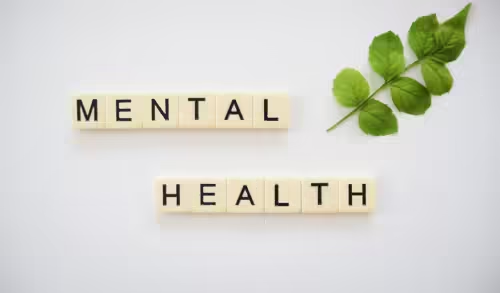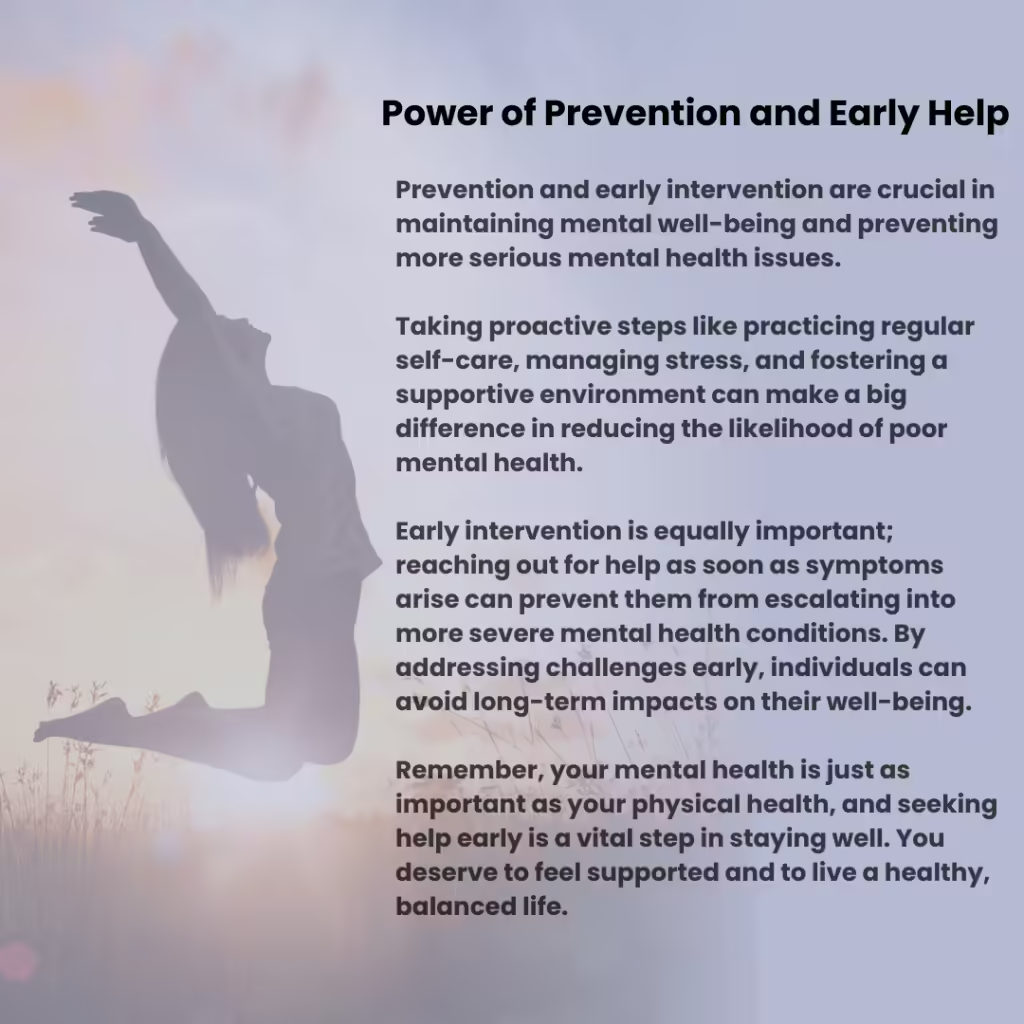As a psychologist, I often come across confusion most specifically when it comes to the difference between poor mental health and mental illness. These two terms are frequently used in the same context but express the different parts of our psychological health. Though both are somewhat related it can be relevant to know how they are different and why this difference is significant for individual and community health.
Is a Mental Illness an Indication of Poor Mental Health?
The increased rate of suicides mostly occurs because people hesitate to ask for help because it is shameful to have a mental illness. A research conducted at The Ohio State University revealed that 90% of the population that commit suicide had a mental disorder. This highlights the extent of suffering, which people with poor mental health and mental illness undergo when society isolates and degrades them instead of helping them.
However, it is vital to differentiate between poor mental health and mental illness most of the time. As having seasonal flu does not mean one’s general physical health is not good, the person with anxiety disorder can also be mentally healthy when properly managed. Also, having poor mental health does not necessarily mean that one has a mental illness. It is quite normal to feel sad, angry, or even tired after experiencing a certain difficulty or stress in life and such feelings do not necessarily indicate that an individual has a mental health disorder.
Failure to get help for poor mental health may indicate the presence of a mental disorder in the affected individual. It is important to target both those who suffer from poor mental health and mental illness without stigma in order to encourage people to seek the help they need.
What Poor Mental Health and Mental Illness Have in Common
Despite their differences, poor mental health and mental illness share key similarities. Both can produce major impacts on patients’ working capacity, activities of daily living as well as their well being. According to research the proportion of adults suffering from poor mental health each year in both America and Europe is approximately 20% and about the same number are living with a mental illness. The overlap usually is seen in the signs and symptoms collectively, including anxiety, depression, and sleep disorder.
I have observed in my practice, untreated poor mental health can progress to the manifestation of mental illness. Both poor mental health and mental illness are influenced by a variety of factors, including socio-economic pressures, lifestyle choices, and lack of access to support systems. For example, Europe finds that 27% of patients with poor mental health do not consult, this largely because of issues to do with stigma or lack of resource as found in America. To improve overall well-being, it’s essential to address poor mental health and mental illness with the same seriousness and to break down the barriers to seeking help.
Am I “Crazy” If I have a Mental Illness?
No, it does not mean that you are “crazy” if you have poor mental health and mental illness. I hope people realize how much harm this label causes because in my years of practice, I have witnessed it firsthand. Poor mental health and mental illness are conditions that result from different causes, just like physical health disorders. No one will call a person “crazy” who has diabetes or a condition in his heart. Thus the same should not be done to those with mental issues.

Poor mental health and mental illness impacts the body as well as the mind. Depression or anxiety could be some of the mental illness that have physical symptoms such as fatigue or headaches. Likewise, long-term physical sickness results to poor mental health and hence a cycle that is hard to interrupt. Labelling someone with poor mental health and mental illness as “crazy” not only puts them out of their place but also discourages them from seeking help.
This is a crucial point to stop the long-suffering of stigmatized individuals. Stigma diminishes when poor mental health and mental illness are seen as the critical health conditions they are, and people are encouraged to talk about it, seek diagnosis and treatment as they would do for any illness affecting their bodies.
Misunderstandings Leading to Stigmatization of Poor Mental Health and Mental Illness
Both poor mental health and mental illness exist on a spectrum, similar to how physical health and illness do. It means that you can be in poor mental health but not have any mental illness, or be in good mental health even with a diagnosed mental illness. For example, a person experiencing depression may have phases during which the condition does not interfere with the person’s life and can be treated. On the other hand, a person who does not have any of these disorders may still experience chronic stress, or have emotional issues, which would be considered as poor health.
However, this misunderstanding commonly results in stigmatization. According to the World Health Organization (WHO), stigma associated with mental illness is still present to date. According to a CBS News, 87% of the adults surveyed believe there is still a social disgrace associated with mental health disorders that would deter people from accessing the right care and treatment.
How Poor Mental Health Can Turn into Mental Illness
Poor mental health and mental illness are interconnected, but they are not the same. The poor mental health in a process that means a person has a temporary issue relating to a person’s well-being, emotional, psychological or socially, whereas a mental illness is a clinical condition interfering with a person’s functioning. The line between poor mental health and mental illness can be blurred, as long-term poor mental health, if untreated, can sometimes develop into a more serious condition. Most individuals consider mental health issues as arising from various life events such as trauma, stress, or bereavement.
However, poor mental health may indicate the onset of other mental illnesses, major depression, anxiety disorders, and even schizophrenia. The relationship between poor mental health and mental illness is complex. For instance, a person who may be experiencing stress or loneliness will first of all have a non-chronic mental health problem but the condition may worsen over time and become permanent if no help is sought.
Mental health disorders are also common in Europe with statistics pegging the figure at 84 million people who are affected by one form of mental health disorder or another every year. Early detection of precursors of poor mental health and seeking help is critical in preventing the slide from poor mental health to mental illness.
Looking into the Broad Spectrum of Poor Mental Health
Mental health can be recognized to have a broad spectrum that does not only include how people think, feel and behave, it also refers to our emotional, psychological, and social well-being. When we claim to have good mental health, we are simply referring to the capacity to handle stress, foster relationships, and act rationally.
The mental health is claimed to be poor when this balance is disturbed due to stress, trauma, and other events. Symptoms of poor mental health of an individual include challenges in performing daily activities, stress, or poor regulation of feelings. However, if one sometimes feels low, sad, stressed or anxious, this does not automatically infer that the person has a mental health disorder that is diagnosable.
Mental health literacy among working age adults in the United Kingdom was measured in 2015 and it was evident that 61% of them had poor mental health literacy. This indicates that a large proportion of the population lacks adequate understanding of when to seek help when developing mental health problems or when identifying mental health problems in others.
Mental health problems are also prevalent in the U.S. since a study in 2019 revealed that approximately 50 million citizens struggled with some type of mental ailment in that year alone. However, it is important to mention that most of these people cannot be diagnosed with mental illness according to clinical records.
Mental Illness always has a Clinical Diagnosis
Mental health on the other hand is a medical condition of the individual’s mental well-being encompassing depression, anxiety, bipolar disorder, or schizophrenia. Centers for Disease Control (CDC) has used the term mental illness to describe conditions that impact a person’s thought process, emotions, or behaviors. Poor mental health and mental illnesses are different since poor mental health is less serious than mental illness which does not require professional or clinical help in every case.
The number of people with mental health conditions has also risen to one in eight people, approximately 970 million in 2019 worldwide. In the US alone statistics are even more alarming; over half of the population is expected to develop a mental health condition at some point in their lifetime. Likewise a significant part of disease burden in Europe can be found to be filled with mental illness and the two most prevalent disorders are anxiety and depression.
Causes of Mental Illness
In my practice as a psychologist, most of my patients are confused about what has caused their mental illnesses. First of all, one needs to remember that poor mental health and mental illness are determined by such factors as biological and psychological characteristics, environment, and socioeconomic conditions. Often the precise causes remain unknown though research demonstrates that genes, neurochemistry and life experiences are relevant factors.
Biological Factors
Depression and anxiety for instance are thought to have a genetic component as they are known to occur from one generation to another. But let’s be clear about this: if a family member has poor mental health and mental illness, it doesn’t mean that the person will develop one. Abnormalities in brain chemistry also contribute significantly to the development of the disorder.
For instance, if the levels of neurotransmitters rise or drop, the connections in the brain by the circuits, which handle mood and behavior, may also go wrong and cause depression or anxiety. From my own experience I have observed cases where TBI and prenatal injuries are also causes of the onset of mental illnesses.
Psychological and Environmental Factors
Psychological trauma, particularly in childhood, can significantly contribute to poor mental health and mental illness. The named childhood adversities, particularly severe abuse, loss, or neglect, were associated with the identified vulnerabilities in adulthood.
Such moment can be a period in one’s life when other stressful life events occur including a death or a divorce even if one does not have mental health problems. From my practice I have seen that, these conditions are made worse by other social factors like unemployment or poverty making it a cycle.
The Complex Interplay
It’s crucial to understand that poor mental health and mental illness are not one-size-fits-all. It is possible for a person to have poor mental health because of stress with no possibility of the disease diagnosis. On the other hand, a person diagnosed with a mental disorder can have good mental health when the disease is well managed by appropriate treatment. It is important to to recognize and address for both aspects in improving the mental welfare of societies.
Physical Signs of Poor Mental Health and Mental Illness
In my practice as a psychologist, I have encountered many patients who come to me with complaints of physical symptoms without any explainable reason. What many don’t realize is that poor mental health and mental illness often manifest physically before the emotional or psychological signs are recognized. A study reveals that millions of people in the USA and Europe have not been diagnosed with mental illnesses even though they have these complaints accompanied by physical complaints like chronic pain, digestive problems, and tiredness.
How Poor Mental Health and Mental Illness Present Physically
Often patients with anxiety or depression complain about physical symptoms, which may seem to have no relation to a mental disorder at first glance. Research data show that more than 30 percent of patients suffering from anxiety disorders suffer from chronic physical pain or tension. Likewise, people who have depression may have chronic tiredness, headaches or problems with their stomach. Common physical symptoms of poor mental health and mental illness include:
- Aches and pains
- Chronic fatigue
- Headaches
- Digestive issues
- Muscle tension
- Cardiovascular strain
The Mind-Body Connection
Mental illness and poor mental health can also reduce an individual’s thresholds for pain such that even minor discomfort can be deemed unbearable. The body’s stress response, especially in people with anxiety, releases a large amount of cortisol and adrenaline into the system leading to muscle contraction, digestive problems and heart problems. While it’s easy to dismiss physical symptoms as unrelated, it’s important to consider poor mental health and mental illness as possible root causes. Understanding and addressing these physical signs is critical for improving overall well-being.

Mental Illness vs. Mental Disorder, What’s the Real Difference?
While these two terms are often used synonymously, they have different meanings especially within the clinical and legal contexts. Understanding the nuances is crucial in addressing poor mental health and mental illness.
Mental illness is the term used to describe any type of health disorders that affect a person’s emotions, behavior and thought processes. Some common examples include depression, anxiety, bipolar disorders, and schizophrenia among others. Mental illness is common with 26% of the adults in the United States experiencing a mental illness in a one year period.
The situation is similar in Europe, where poor mental health and mental illness affect around 84 million people. Such conditions always result to persistent suffering and affect a person’s functioning in various aspects in life including the workplace, school and interpersonal relationships. However, when the signs worsen, they are termed as a mental disorder, a term commonly used in legal practice under the acts such as the Mental Health Act.
A mental disorder is similar to a mental illness but is more frequently described by legal standards. In the Mental Health Act, a mental disorder means a state of mind that is different from the normal and which presents a serious danger to the life of the individual or which causes that individual to be unable to cope with everyday life. Milder manifestation of these conditions may not be considered a mental disorder while psychosis or severe bipolar episode may be due to a mental disorder. In both cases, it’s essential to address poor mental health and mental illness seriously.
Role of Prevention and Early Intervention
Prevention and early intervention are critical strategies in addressing both Poor Mental Health and Mental Illness. Prevention is key; focusing much of our attention on mental health treatment after a diagnosis is going in the wrong direction and far too late, especially when it comes to the incidence of mental health issues and good well being.
Early intervention is about identifying and addressing mental health challenges before they become severe, while prevention aims to create environments that reduce the likelihood of Poor Mental Health and Mental Illness developing in the first place. And as we increasingly see mental health challenges around the globe, these types of strategies are becoming more and more important.

Increasing awareness and mental health literacy are an essential of prevention. When individuals and communities are better informed about Poor Mental Health and Mental Illness, they are more likely to recognize early signs of mental health deterioration. It allows people to do something before these early warning signs turn into something much bigger.
Educational programs in schools, workplaces, and communities can be vital tools in reducing the stigma surrounding Poor Mental Health and Mental Illness, encouraging individuals to seek help before their condition worsens. When people are allowed to suffer in silence, in the kind of environment that doesn’t tolerate mental health, mental health issues are more severe and last longer.
Prevention also involves creating supportive environments that promote mental well-being and guard against the onset of Poor Mental Health and Mental Illness. Factors that cut down the risk of mental health problems are stable employment, strong social networks and access to mental health services. Governments and organizations can help by implementing policies that address socioeconomic stressors like unemployment and poverty, which often contribute to Poor Mental Health and Mental Illness.
Flexible work hours, stress management programs, and employee support services can benefit mental health in work places as well. Proactive measures of this sort help set the stage for healthy development free from the onset of problems associated with mental health.
Early intervention efforts also use mental health screening programs. Regular screenings in schools, healthcare centers, and workplaces can help identify individuals at risk for Poor Mental Health and Mental Illness. However, when combined with appropriate follow up care, these screenings can help to catch problems early and lower the possibility these conditions will transform into more serious forms of mental illness. Healthcare professionals play an essential role in providing timely diagnosis and treatment to prevent the escalation of Poor Mental Health and Mental Illness.
By prioritizing both prevention and early intervention, society can mitigate the growing burden of Poor Mental Health and Mental Illness, improving the quality of life for millions.
For more insights and updates on managing poor mental health and mental illness, follow us on X (Twitter). Stay informed with practical tips to improve your mental well-being and enhance your overall balance in life.
Interested in more topics? Visit other Categories to learn more about productivity, mental health, and company culture!



